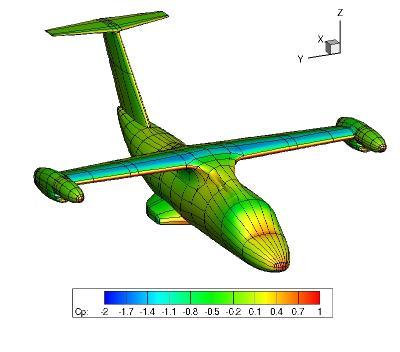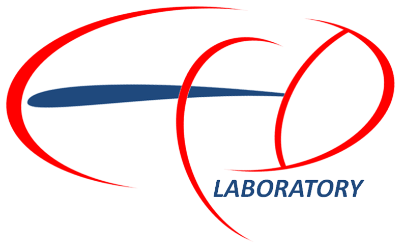Tiltrotor CFD
During the past 50 years, the scientific community attempted to answer some complex questions about the tiltrotor aircraft. This new type of vehicle is presented as an alternative to helicopters, and has the capacity to combine vertical take-off/landing capability with high speed cruise. A compromise in many aspects of design is required, since the same blade has to operate as a helicopter rotor in hover and as propeller in forward flight. In addition, interactional aerodynamics can be very important in tiltrotor aircraft, which should be extensively studied and researched to improve safety and performance.
Results
Numerical simulations using HMB2 were performed on a 1:8 scaled rotor-free model of the ERICA tiltrotor (Enhanced Rotorcraft Innovative Concept Achievement) at different flight test configuration, freestream Mach number of 0.129 and AoA of -2, -1, and 0 degrees. Experimental test campaign carried out at the Politecnico di Milano in the framework of the European project NICETRIP. The composites of the fuselage and nacelle have been combined through a wing, which interconnects both grids, using overset method. To reduce the computational cost of the numerical simulation, half model of the tiltrotor has been computed, applying symmetrical boundary condition at the symmetry plane. Figure 1 shows the surface pressure coefficient at 0 degrees of attack angle. It is remarkable that smoth values of Cp are found at the critical part of this configuration such as junction wing-nacelle and horizontal stabiliser.

Figure 1
Contact
G. Barakos (Professor), George.Barakos@glasgow.ac.uk
A. Jimenez Garcia (PhD Student), a.jimenez-garcia.1@research.gla.ac.uk
Publications
- A. Jimenez Garcia and G. Barakos, Numerical Simulations on the ERICA Tiltrotor using HMB2 solver, 41st European Rotorcraft Forum, Munich, Germany, 1-4, September, 2015.
- A. Jimenez Garcia and G. Barakos, CFD Simulations on the ERICA Tiltrotor using HMB2, 54th American Institute of Aeronautics and Astronautics (AIAA), San Diego, California, 4-8 January, 2016.


